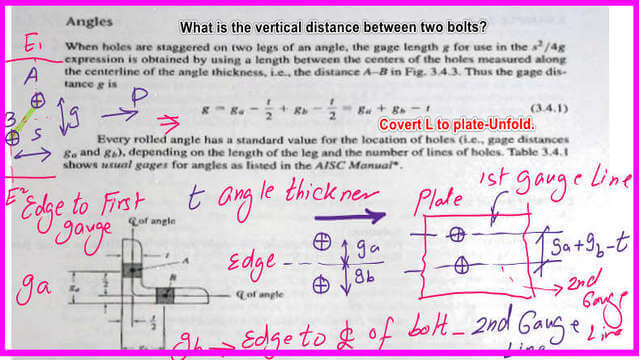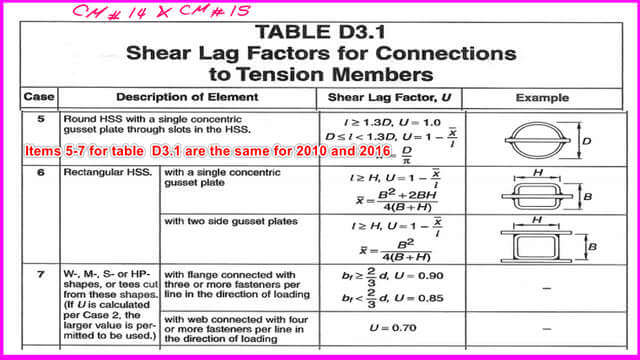Last Updated on October 21, 2024 by Maged kamel
List of Tension Member’s Posts-part 1A.
The tension Member’s Posts-part 1A list will start from post two till post 6.
Solved problems for net area estimation.
This is the second post of the Tension Member’s Posts, which includes a Solved problem 3.1.from Prof. McCormack’s book. Determine the net area of the plate shown in Fig.3.2. The plate is connected at its end with two lines of 3/4-in bolts.

This link for post 2: Solved problems for net area estimation.
Solved problem 3-1 for the nominal strength.
This is the third post of the Tension Member’s Posts, which includes an example From Prof. William T Segui’s handbook. 3.1. A1⁄2 × 5 plate of A36 steel is used as a tension member. It is connected to a gusset plate with four 5⁄8-inch-diameter bolts, as shown in Figure 3.3.
Please assume that the effective net area Ae equals the actual net area An (we cover the computation of effective net area in Section 3.3). a. What is the design strength of LRFD? b. What is the allowable strength for ASD?

This link for post 3: Solved problem 3-1 for the nominal strength.
Simple illustration for workable Gauge Lines.
This is the fourth post of the Tension Member’s Posts, which includes estimating the net area. Later, we will discuss two problems. The main idea is to assess the net area of an angle bolted in different gauge lines.
This is a link for post 4: Simple illustration for workable Gauge Lines.

Two solved problems for the net area estimation.
This is the fifth post of the Tension Member’s Posts, which includes two solved problems. The first solved problem is from Prof. Charles G. Salmon’s handbook, 3.4-2. Determine the area net A net area of the angle given in 3.4.2 if 15/169 in Fig 3.4.4 inch-dia holes are used.

The second problem, 3.5, is from Prof. Mccormack’s book. Determine the net area along route ABCDEF shown in Fig.3.8. Holes are for-in bolts. The details of converting the given angle to a plate is included in the post.
This link is for post 5: Solved problems for the net area estimation.
Definition of the effective area for tension members.
This is the 6th post of the Tension Member’s Posts, which includes a new subject: How can the effective area be estimated? The effective area will be considered if a structural steel element is subjected to the tensile force. A comparison between D3.1 for CM#14 and CM#15.
An example -4-1 U-Value for a Bolted connection of an equal angle For the bolted tension member shown in Figure 4-6, determine the shear lag factor, U; the net area, An; and the effective area, Ae.

The link to post 6 defines the effective area for tension members.
This is a link to the list of tension members’ posts in part 2.
An external source for tension members from Prof. T. Bartlett Quimby’s site, which is the Tension Member Overview